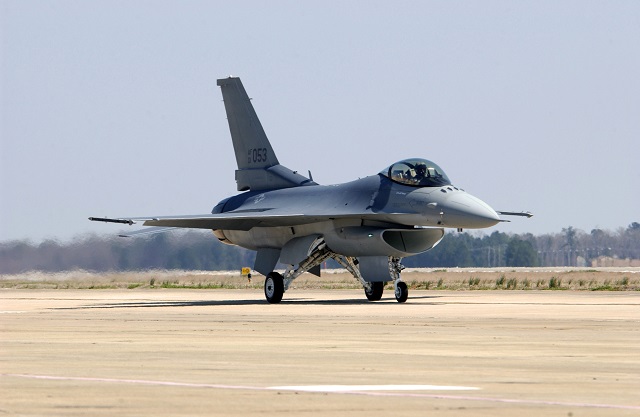Holloman AFB in New Mexico has been selected by the US Air Force to be the interim home for two new Lockheed Martin F-16 training squadrons.
Established as a result of “critical” pilot shortages in the air force, the two squadrons will temporarily be based at Holloman until a permanent flight training unit (FTU) is established to address the shortage on a long-term basis.
“As the air force increases undergraduate pilot training, corresponding increases need to be made to flying training units. These new FTUs will be used to absorb new pilots for continued training,” the USAF says. “Holloman was selected as the preferred location because site survey analysis concluded it has the capacity and existing command structure to begin producing pilots faster than other proposed locations.”
If the service's recommendation is approved, 45 F-16s will transfer from Hill AFB in Utah to Holloman in summer 2017.
The air force is evaluating 34 US sites to be the base for a permanent FTU to address its pilot shortage. All of these already have fighters based at them and a runway length of at least some 2,440m (8,000ft). Hangar space, airspace availability, weather and cost are also other factors being considered, and a location downselect is expected in early 2017.
The 54th Fighter Group already trains 120 pilots and 200 crew chiefs on the F-16 per year at Holloman AFB, plus 20 flight surgeons.

US Air Force
The New Mexico base is also the primary location for the USAF’s General Atomics Aeronautical Systems Predator unmanned air vehicle training, which has also faced a challenge with pilot shortages.
First highlighted in a Government Accountability Office report released in May 2015, the shortage has led the air force to attempt to rationalise and increase pilot training.
The service said earlier this year that requests for UAV support are “at an all-time high”, and even with personnel supporting the high operational tempo, UAV operations are faced with manning shortages and resource constraints. This has led to it allowing enlisted personnel to begin training as unmanned systems operators, starting with the Northrop Grumman RQ-4 Global Hawk.
Source: FlightGlobal.com



















